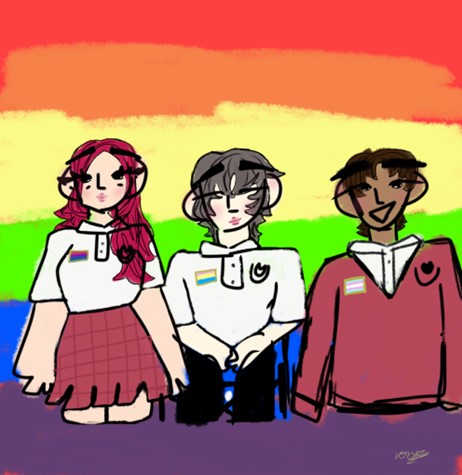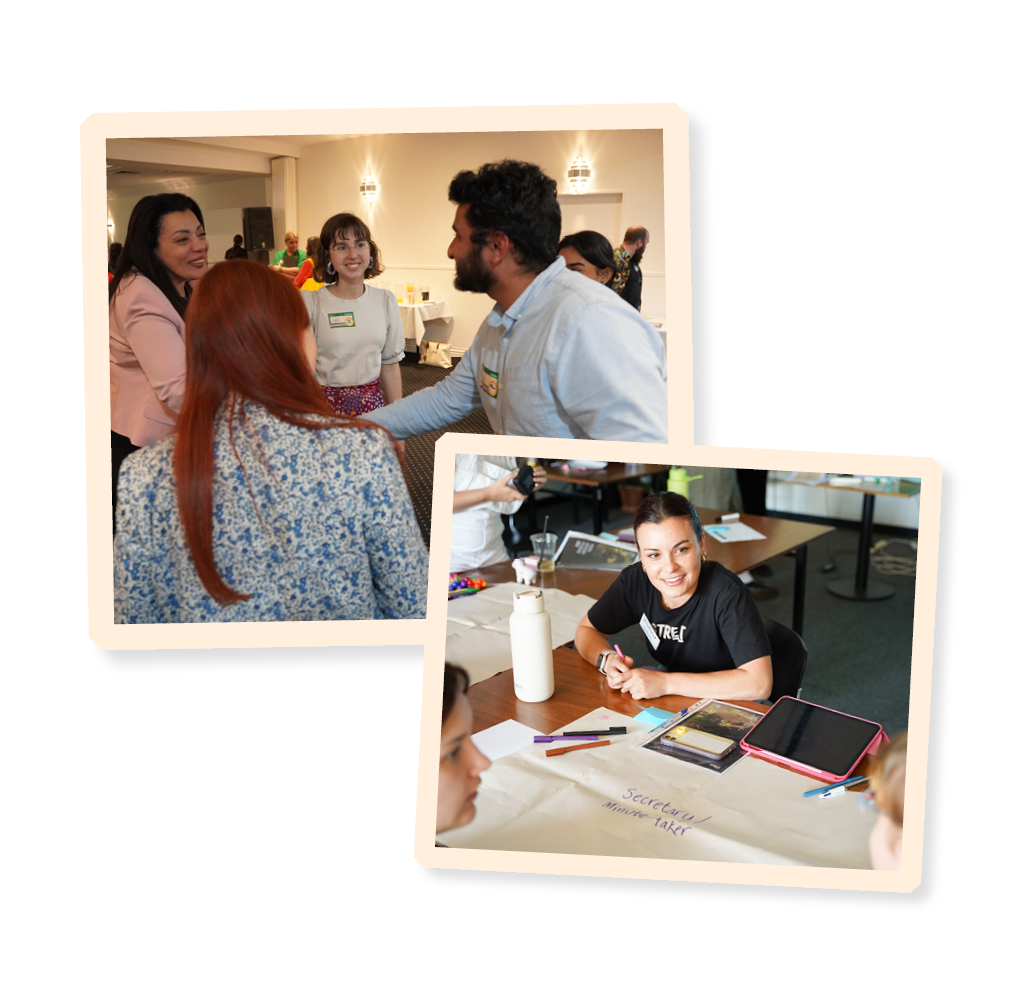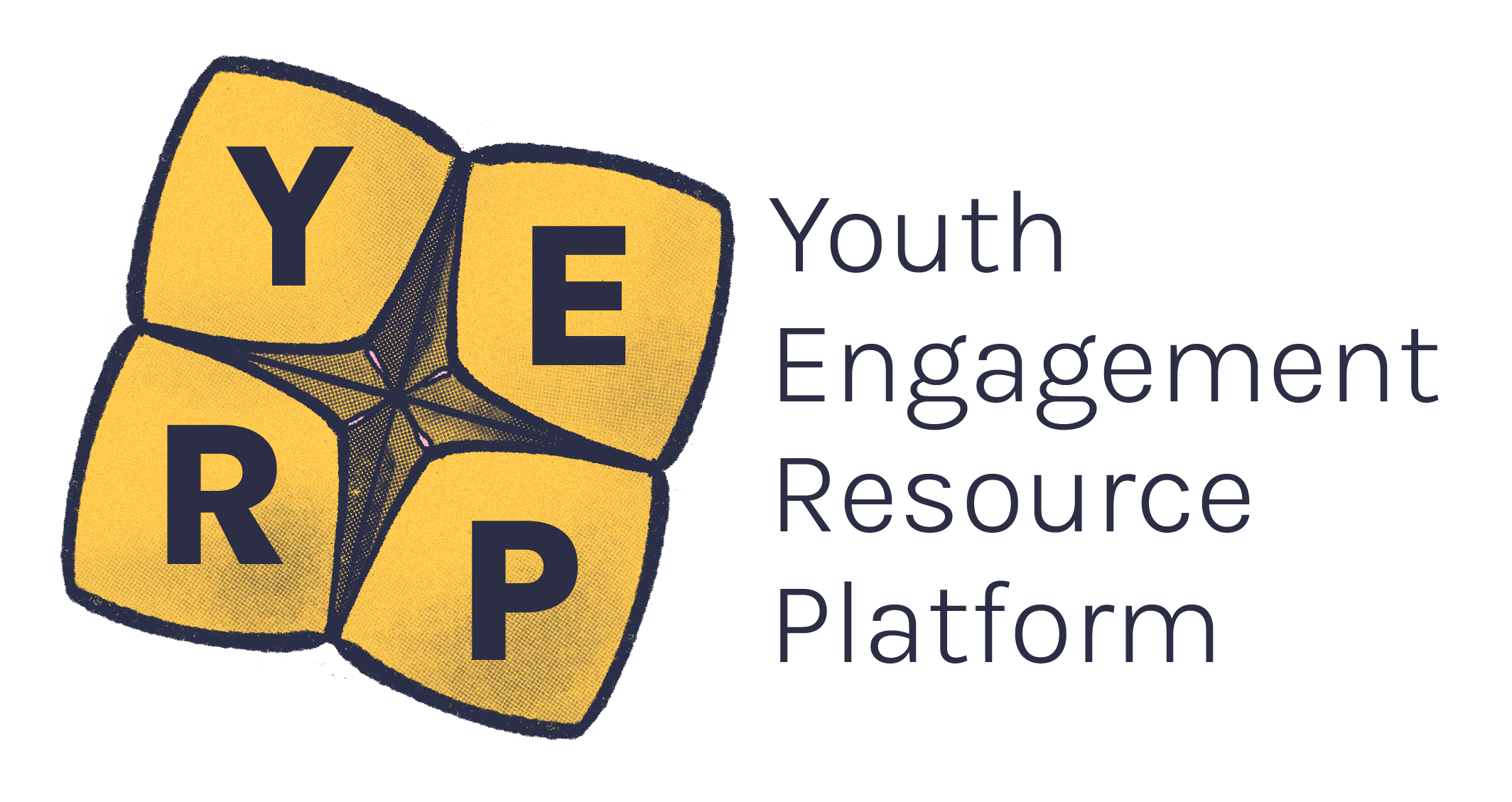Life can be fun and fulfilling, but it can also be stressful and sometimes isolating, so feeling like you belong in a community is important to feeling secure and happy!
A community is a place you can share your wins and your failures, and where you can find support in tough times. Belonging is fundamental to the human experience and feeling like we belong is key to our wellbeing, helping us to manage stress and loneliness.
Communities can mean different things for different people, but generally, a community is a group of people who share an identity-forming narrative3.
Members of a community can have a sense of trust, belonging, safety, and caring for each other.
They often have common interests and goals, shared meaning, and a collective sense of ‘togetherness’3.
Communities can also be considered based purely on geographical locations - think about the community you grew up in, your suburb or town.
Illustration by Rory

There are many different kinds of communities out there, and we can group most around a couple of different themes.
Location
Location-based communities are those where group members are connected by geography, shared locations and places.
Think of these types of communities in terms of:
Where people live
Where they were born
Nationality
Where people went to school.
These communities may be purely based on location, or members of the community may utilise this location for things like neighbourhood watch programs, volunteering for the local CFA, sporting clubs, school fundraisers etc.
Identity
Identity-based communities are made up of people who are connected by a shared part of their identity.2 For example:
Religion
Sexual orientation
Living in rural or regional areas
Having a disability
Cultural background.
Academic and career
There are also communities formed around people’s careers, workplaces and their academic experiences.2
These can be specific communities such as school and university alumni networks, or a workplace social netball team.
They can also be more dispersed such as ‘the academic community’ or ‘the medical practitioners community’, where the organisation surrounding the community is less formalised.
Interest
There are also many interest-based communities, where group members are connected by their interests.2 For example:
A shared love of movies
Favourite sports team
Community gardens
Taking pottery classes
Book clubs
Arts and crafts
Music and being part of a band
Running clubs and sports.
This also extends to things like activism and ways of life that people to choose to live. For example, being part of zero waste movements, planting trees, fighting for social justice etc.
Different communities allow us to feel supported and connected throughout our lives.
Everyone should feel like they belong. Finding your community, your people - who are like-minded and have shared interests, is really important3. Connecting over shared interests or life experiences can make it easier to form deeper connections and contribute to you feeling like you belong.
You can naturally find yourself belonging to a community, especially ones based on your identity or location, but there are also communities you can join.
Joining a new community can be a great way to explore different parts of your identity.
In terms of joining communities, you generally have free reign to interact with whichever one you’d like to! Depending on the community, group or club, they may have certain requirements to meet, so just reach out to a key contact to see how you can be part of their collective.
You could email the community if there is a contact available or reach out on social media.
If you have friends who are part of that community, ask them how they got involved or if they can introduce you to the right people.
Remember, you don’t only have to join communities that you see a direct connection to; try new things and see if you like them!
Always make sure you feel safe, supported, and happy. There’s no point trying to join a community that makes you feel like you need to be someone else to participate. Chat to those around you if you have any concerns about any of the communities that you’re looking to join, they may be able to give you some advice about how to find out where best you belong!
In our search to find a community and have people around us, there is a risk of finding a community that is harmful and does not have our best interests at heart.
Have you heard of radicalisation? The term ‘radicalisation’ describes the process where a person becomes extreme in their thinking and behaviour.2 This process of radicalisation preys on vulnerable, lonely and isolated young people and you should be empowered to spot the signs1.
Signs of an unsafe community:2
Reinforce harmful behaviours such as violence, aggression, vandalism, property damage or trespassing.
Encourage you to be disrespectful to other members of the community.
Encourage you to harm people or treat people in a negative way.
Justify dangerous actions as ‘being the right thing to do’.
Put you in danger.
They scare, hurt, isolate, humiliate or harass you.
They monitor you and control your day-to-day activities.4
If you’ve recently joined a community and they are doing any of the above, or you just don’t have a good feeling about them, you should tell a trusted adult.
Check out Living Safe Together.4
Contacts you may find useful if you're experience distress in a community:
Lifeline: 13 11 14
Suicide Call Back: 1300 659 467
Kids Helpline - for ages 5-25: 1800 55 1800
Beyond Blue: 1300 22 4636
headspace: 1800 650 890
13Yarn - Aboriginal or Torres Strait Islander Crisis Support: 13 92 76
Mensline Australia: 1300 78 99 78
SANE Australia: 1800 187 263
Yarn Safe: Resources on mental health and wellbeing, stress and pressure, relationships and alcohol and drugs.
Just remember that communities should make you feel happy and supported. They should keep you safe at all times and not cause harm to you or anyone else.
The online world has been incredible in opening our eyes to all the amazing communities out there and allowing us to access them.
Social media and online forums, groups and networks have enabled us to be part of communities in a way that we never could before because we were physically apart from them.
Now you can join communities much easier and in accessible ways – the world is your oyster! Just make sure you stay safe when interacting with others online, like you would in-person!
While it is important to find a community you connect with, don’t let it stress you out!
There’s no need to feel like you are missing out if you don’t have a set, specific community – you may have even not recognised interactions or groups you’re involved with as a community.
A community can also simply be your friends, the people around you. You can start your own community! It’s about the people you find and meet; like-minded, cool, fun, accepting people.
- Jayakumar, S. (2019). Terrorism, Radicalisation & Countering Violent Extremism: Practical Considerations & Concerns. Springer
- Lowe, T. (25 February 2021). What is ‘community’ and why is it important?. Medium. https://medium.com/centre-for-public-impact/what-is-community-2e895219a205
- NSW Government. (n.d). What is coercive control. https://www.nsw.gov.au/family-and-relationships/coercive-control/what-is-it
- Living Safe Together. (2020). The signs. https://www.livingsafetogether.gov.au/identify-and-act/the-signs
Related Topics
Staying safe while advocating
How to take care of yourself while standing up for things that matter to you.
Getting involved in disaster preparedness and recovery
How to be ready for disasters and recover after them.
Getting involved for the environment
How to do your part in building a sustainable environment for the future.





